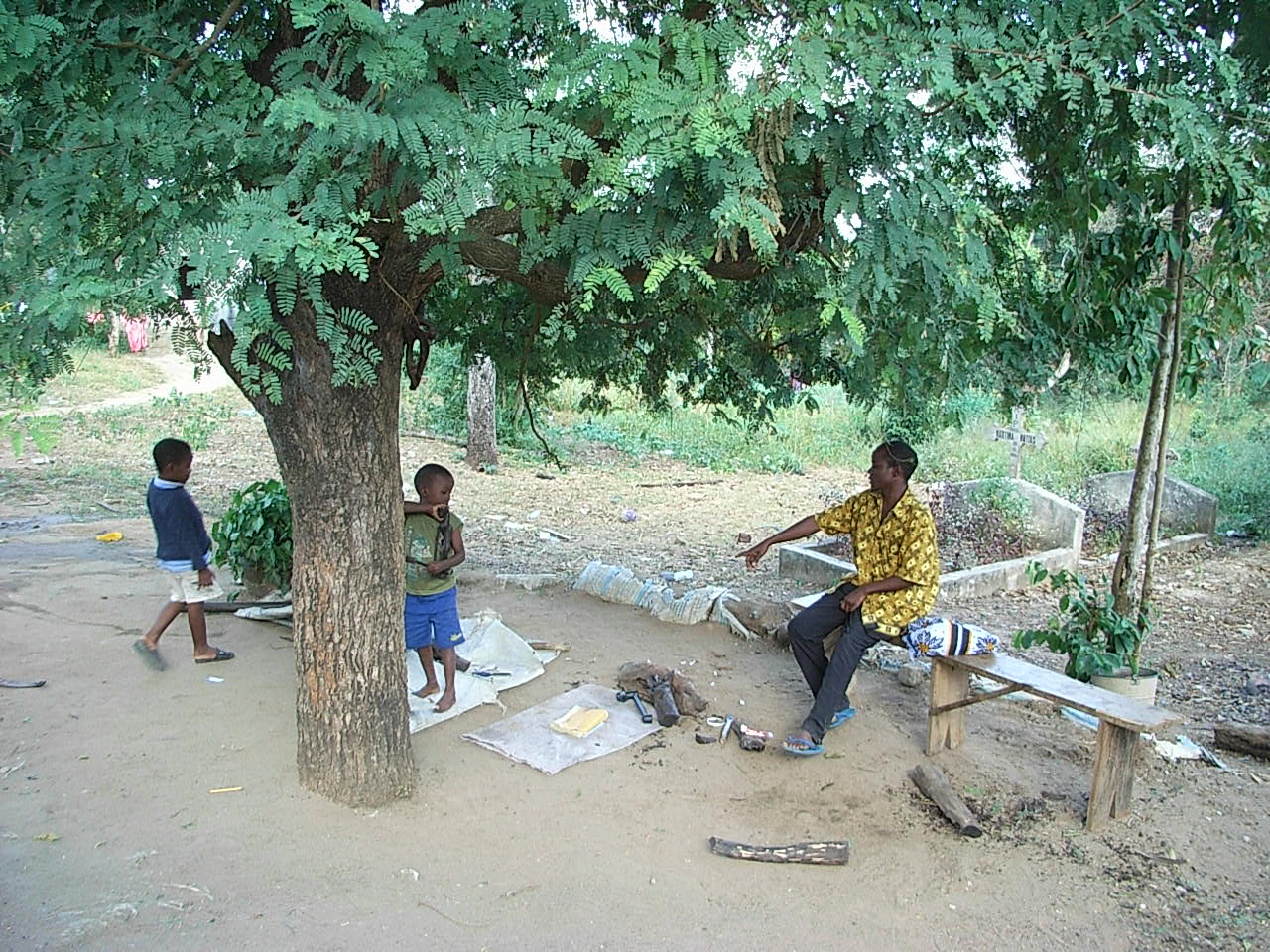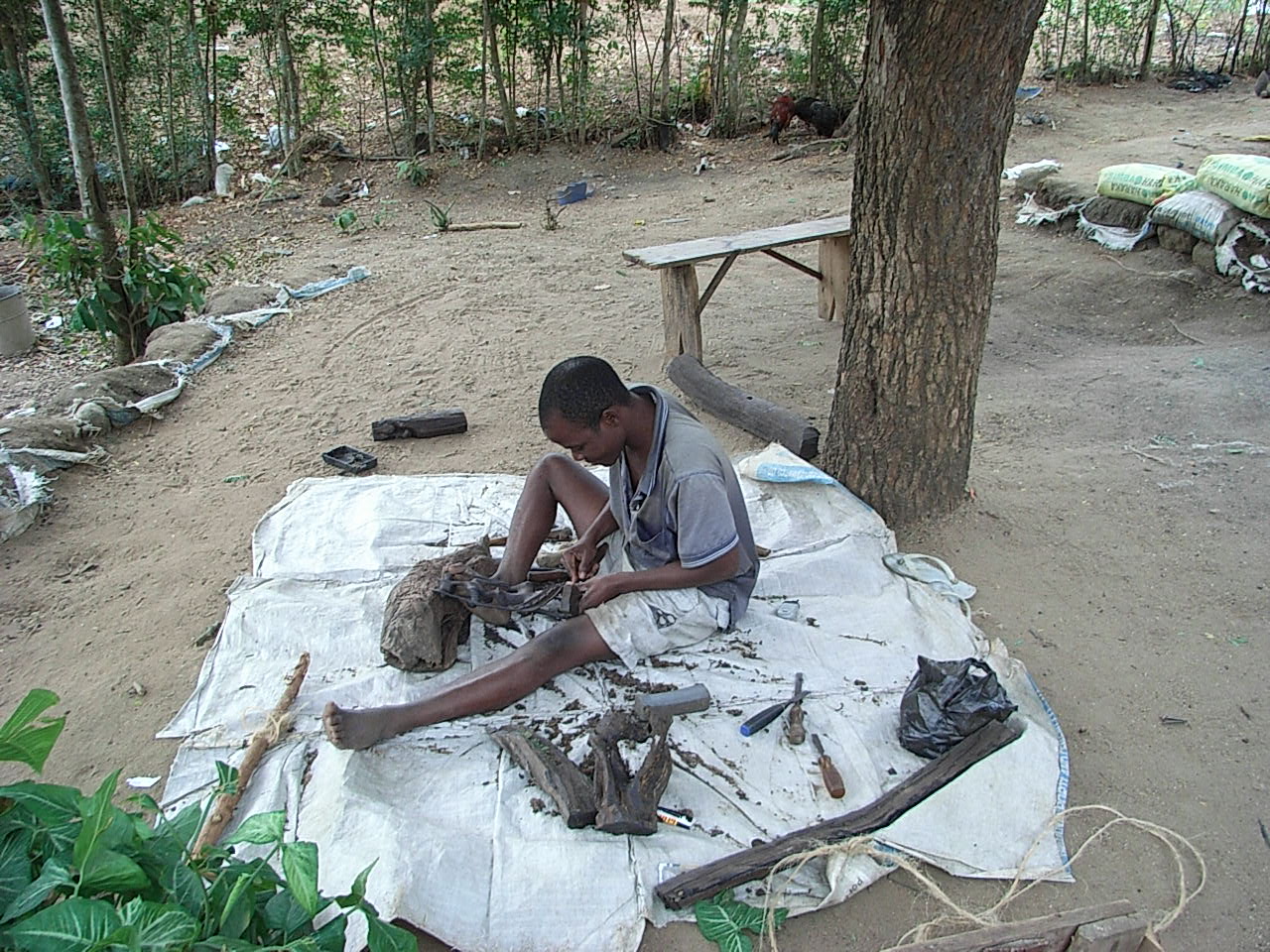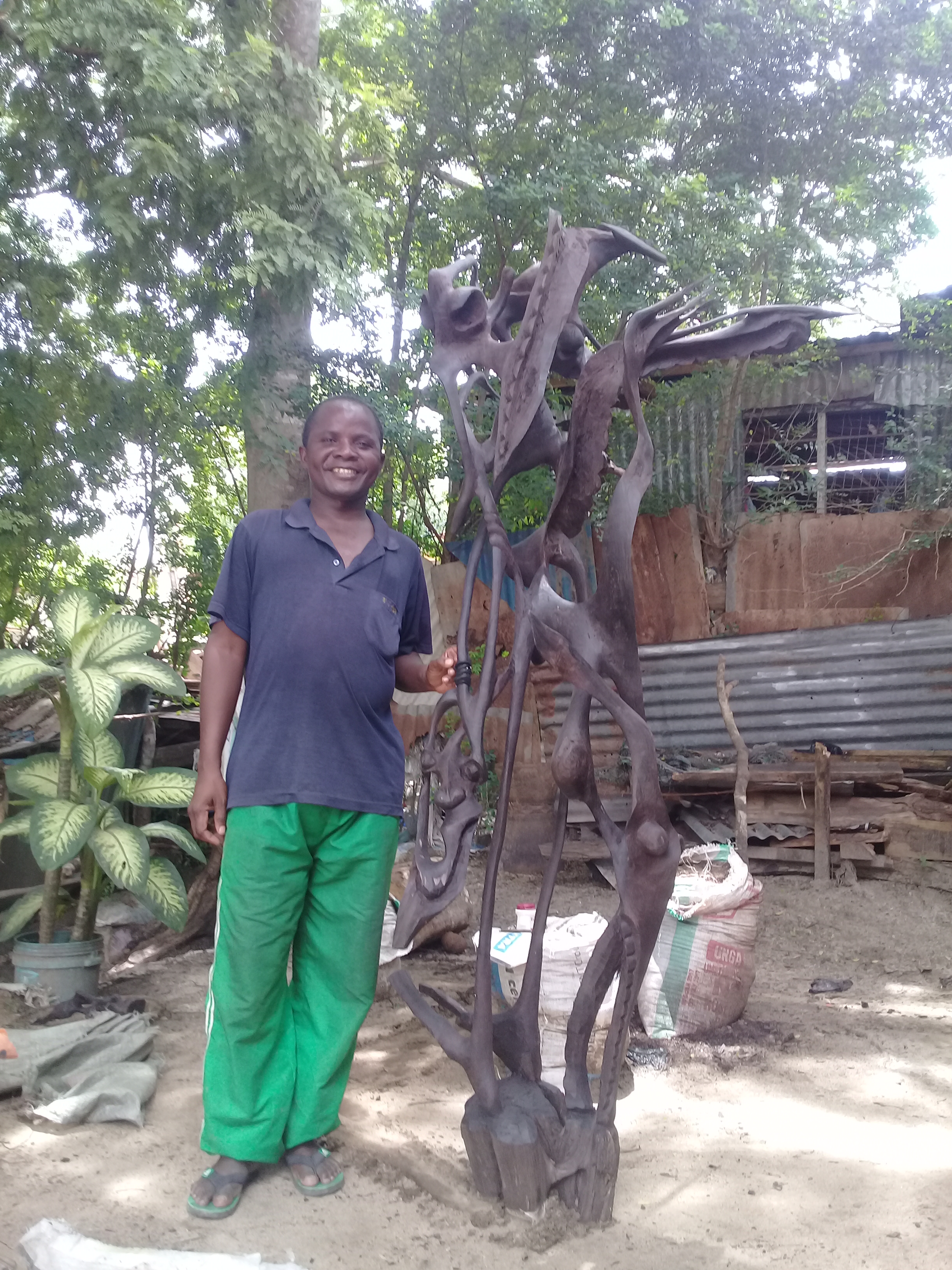7. People in
Tanzania and Shetani
We have introduced various works of art in Tanzania.
All works exhibited in this special exhibition are owned by Ms, Asami
Kanayama.
She had lived in Tanzania for many years and had interected with the
artists there.
We interviewed her about the people in Tanzania and Shetani.
 -Do you feel that the life style or social relationships of Tanzania is very different from Japan?
Are there things that is not so different between those two countries?
-Do you feel that the life style or social relationships of Tanzania is very different from Japan?
Are there things that is not so different between those two countries?
When we pass by others on the street, we exchange greetings even in
a big city like Dar es Salaam. For example, when I had my wrist broken
had cast on it, many people said to me "Pole" (means bless you in
Swahili) when we were passing by. I was very surprised but also
grateful.
People are close to each other and casually greet and chat with
strangers, and that is something I am very fascinated by. Similar part
I think is that we try to say things inoffensively and put the words
uncleanly. Once, I suggested something to a Tanzanian person, and he
said "Siyo nbaya (not bad)". I thought he was agreeing on my
suggestion but later I found out that he didn't feel good about it. As
you can see in this exhibition, there is a massage in Swahili (Jina)
printed on Kanga. In a lot of cases, people leave the massage that they
want to convey to Kanga.
-What do you recommend in Tanzania? What should we see when we go to Tanzania?
Tanzania is a treasure trove of wildlife and there are a lot of places you should
see like Mount Kilimanjaro, the highest mountain in Africa, the blue ocean, and
the island of Zanzibar.
But the number one recommendation is the Rural Stay Tour that we
have been running for over 30 years ever since we started a travel
agency called JAPAN TANZANIA Tours. You set yourself into the life and
culture of Tanzania and being embraced by the people there, and that
experience allow you to think the meaning of life. Your world would
probably expand.
-Tell us about memorable events with the artists you have had in Tanzania.
One time, I asked Matthias Nampoka "What will you create next?" and he
said "If I hold the wood in the sky, I see what I will carve, and then I
just carve what I see." He had his studio in his home garden where the
sunlight comes through tamarind trees. I then understood that Shetani
comes from the sky.
 |
 |
 |
| Workplace of Mathias,
under the Tamarindo Tree(©Asami Kanayama) |
-You named your work "Shetani Art". Now what does Shetani mean to you?
Shetani exists everywhere in Tanzania. It lives in the river, in the
baobab trees, or in the house with tin roof. Some are good and some are
naughty.
But the Setani that Nampoka and Lilinga creates are all in them. (Some
may fall from the sky)
Their work is to reveal the invisible figure of Shetani through
sculptures and paintings.
They say we all have Shetani in us. Isn't it exciting to look at
their works and wonder about what my Shetani looks like? I am sure my
Shetani has something in common with their Shetani.

